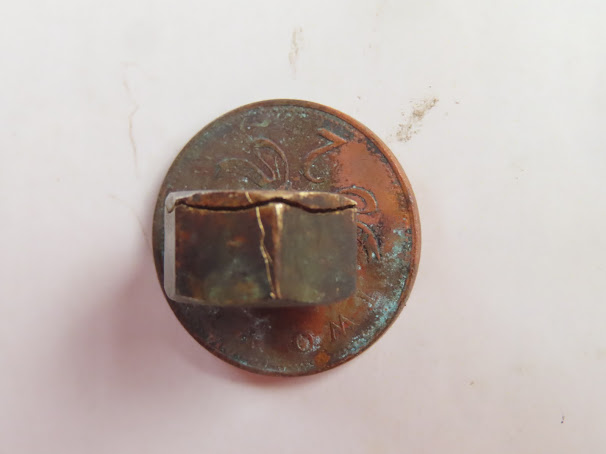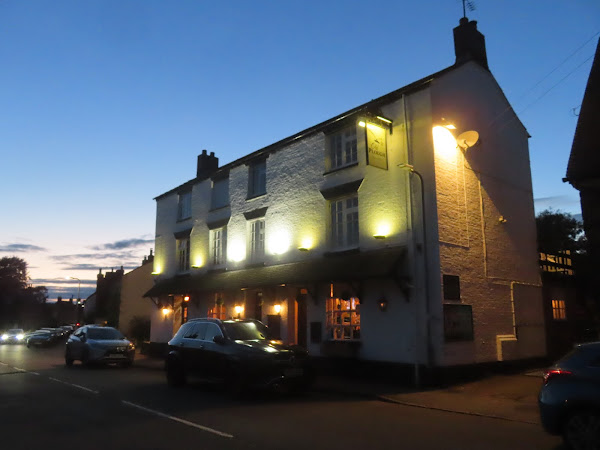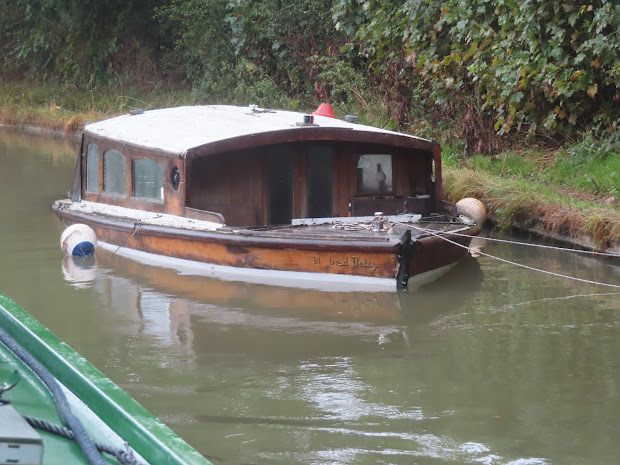The day dawned overcast, but really looked like it was going to perk up before too long. After breakfast Helen wanted to go and look round an open garden that wasn't too far away. We were there by 1030, and there was just the owner there. The garden has a honesty box for the £3-50 entry that is for the National Garden Scheme (Yellow Book) charities. The lady came out and we had a bit of a chat before setting off round the acre garden by ourselves.
NB Holderness
Total Pageviews
Sunday, 20 April 2025
Searching for plants, bowls and leaks.
Saturday, 19 April 2025
A bit of Roman Road, a Swedish shop and an Indian tea.
Not so much of a boaty day today as Helen had plans. We were off to Milton Keynes down the A5 from Daventry. Even on the boat the new house looms large so as there is an IKEA at Milton Keynes we thought we would go and check out what was available in the way of bedroom and bathroom stuff. It would be less of a trip than at home. We have an idea of what we want, it is just finding it that fits into the space we have.
Friday, 18 April 2025
When is Black Green?
Well here we are. It has been ages since my last post. It hasn't been quite so long since a visit to the boat down here in the Midlands. We did pop down pop down to the boat in February just to make sure that it was still afloat but spent the day in Leamington. The boat was still above the water and generally in good nick.
We have been very busy, well I suppose I always am really, but we need to scratch off dates on the calendar so that we don't don't book anything and are clear to get away. There are all the usual things like grandchildren and son away at sea so become more engaged there, Helen's 92 year old Godmother, and mother needing ,more time and care and all the hobbies and volunteering, museum, history walks, babershop singing etc etc. but the main stop to boating activities early in the year is that we have bought another house!
We have been saying for several years that we should think about downsizing, and Helen does like looking on all the sites at what is around. We had decided that we wanted to stay around where we live now, and suitable properties don't seem to come up very often. Helen talks of downsizing but really she seems to want just a room or two less and a smaller garden. We bought a plot of land, designed our house and had it built over thirty years ago, and I would love to have done that again, but trying to purchase land is prohibitively expensive, if you can fine any, and building costs are fantastically expensive too.
I was doing a little historical research into our local area when a a house for sale came up that Helen hadn't seen. I told her and after the weekend she called the estate agent up for an appointment to view just to be told that it had already been sold! Never mind, just a thought. A week or two later they estate agent called and said it was back on the market. This was in January. We went to see it and it was 'just what we were looking for' in a great part of the town. It seems that it was a part exchange and two days later we put an offer in.Two days after we were told that it was going to 'full and final offers' with two of us. We um'merd and a'ared and put an offer in and two days later we heard it was ours. We then exchanged a few weeks later. So from mid January to the start of March was all it took.
That was the start of it as we bought it knowing that we wanted to do a lot to it, basically changing the front to the back. We have therefore been busy finding builders, making designs, visiting kitchen and bedroom places etc etc. And of course there is then getting our current place to sell when we get closer to getting into our new place. I feel that we will be otherwise engaged, precluding sailing off into the sunset until well into the summer.
I replaced the deck boards and seat locker tops a few years ago, and I have been very disappointed with the longevity of them. I bought Buffalo board, phenolic resin hardwood. It is pretty pricey with a non slip surface ideal for deck boards. When I cut them I treated all edges with cut end and water repellent but didn't seem to extend the life of them at all.
The old deck boards and seat locker tops showing the delamination of the buffalo board plywood.Tuesday, 18 February 2025
The Shropshire Union at its best.
Last night there wasn't a light in sight, other than the moon. There was a farm house quite close but we could just see the roof. We got away in a cool'ish wind.






















































